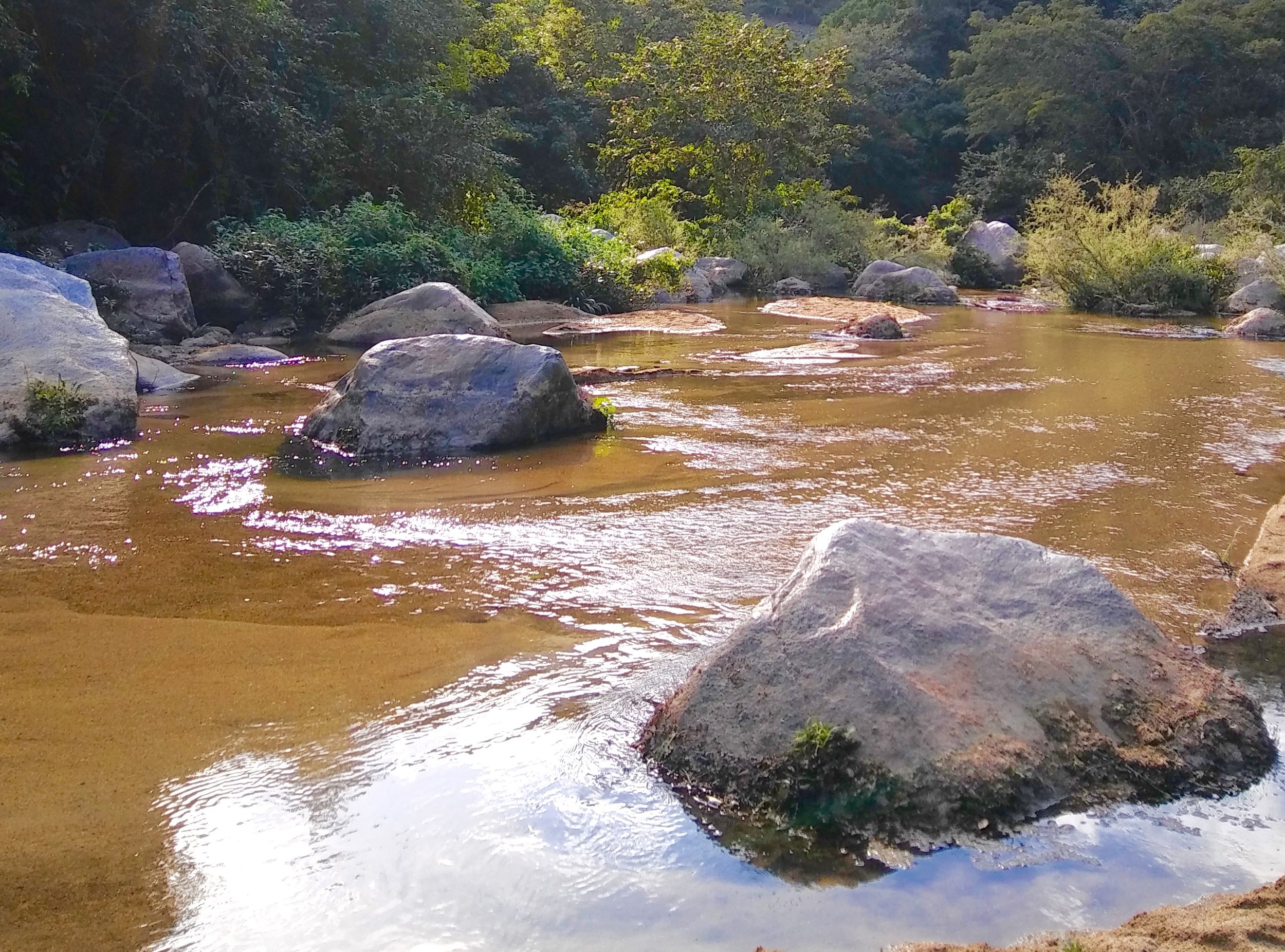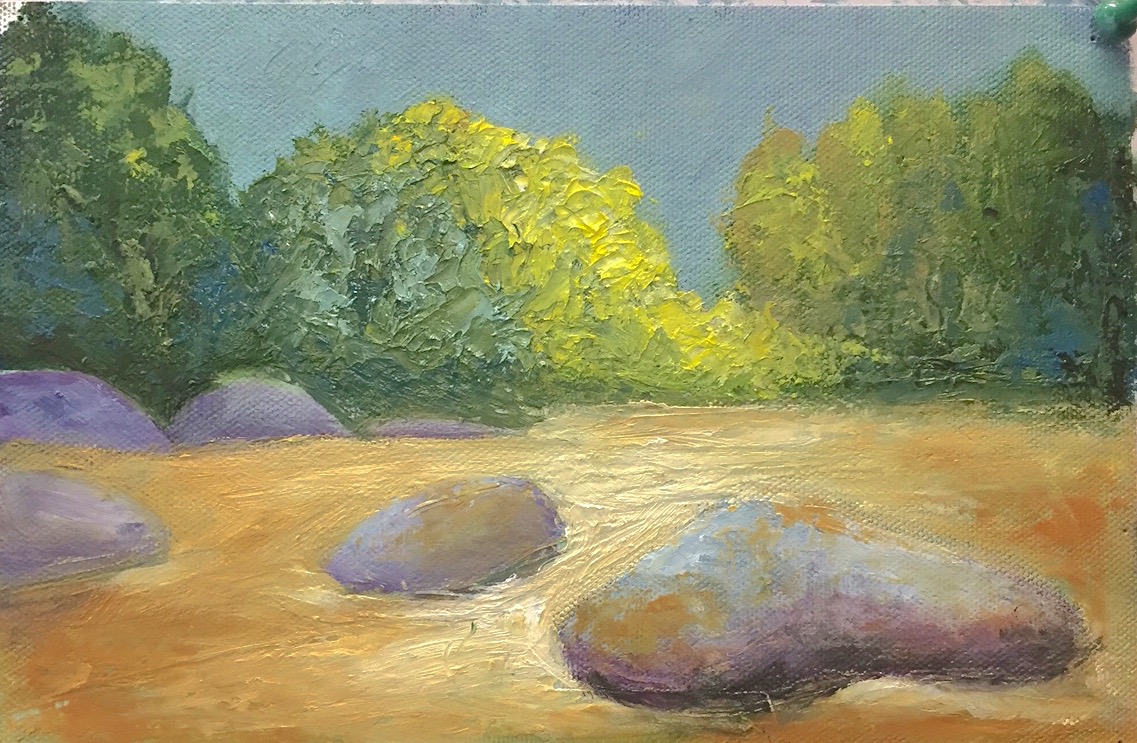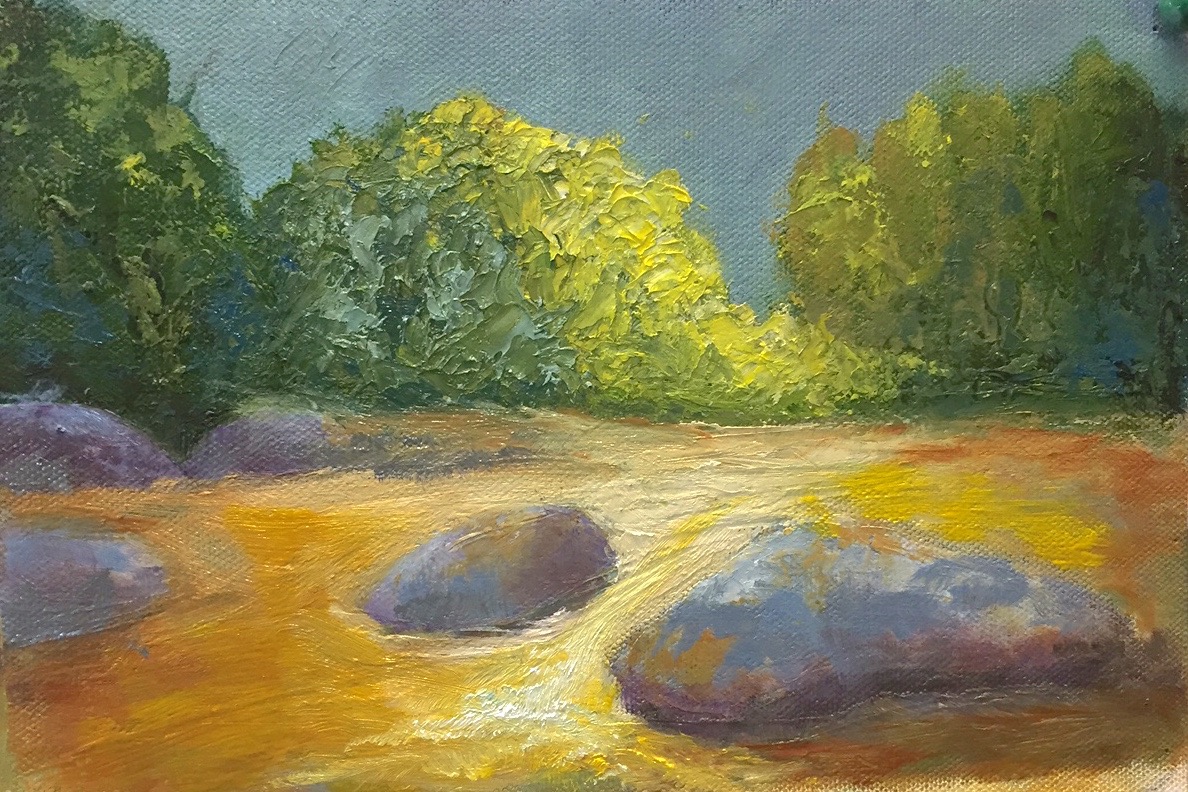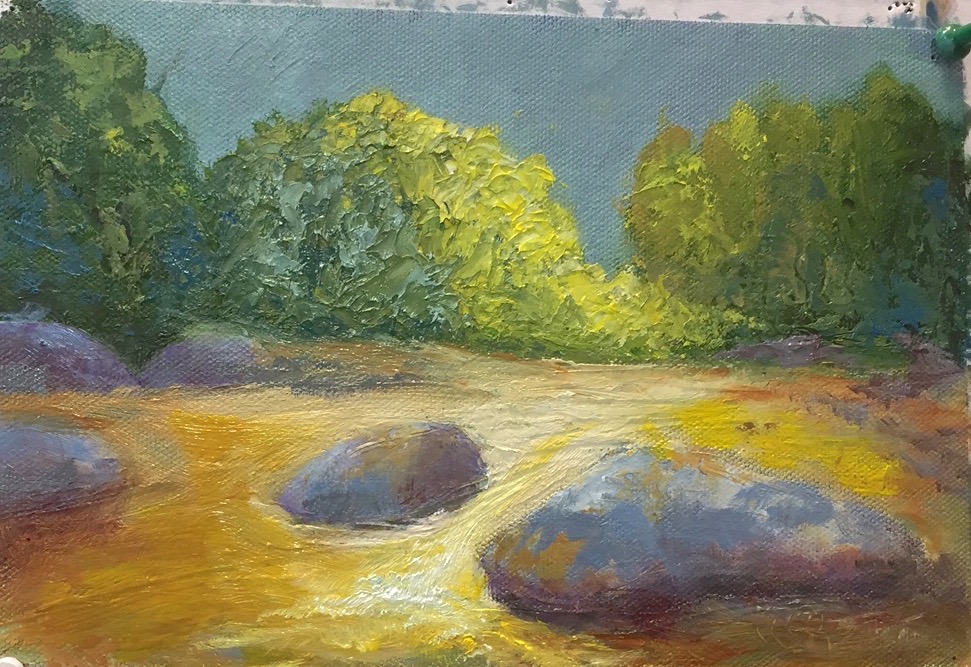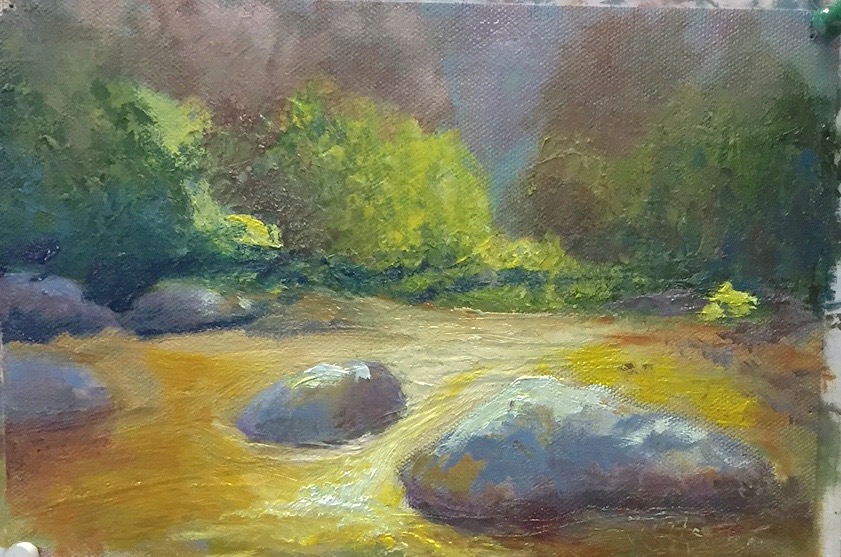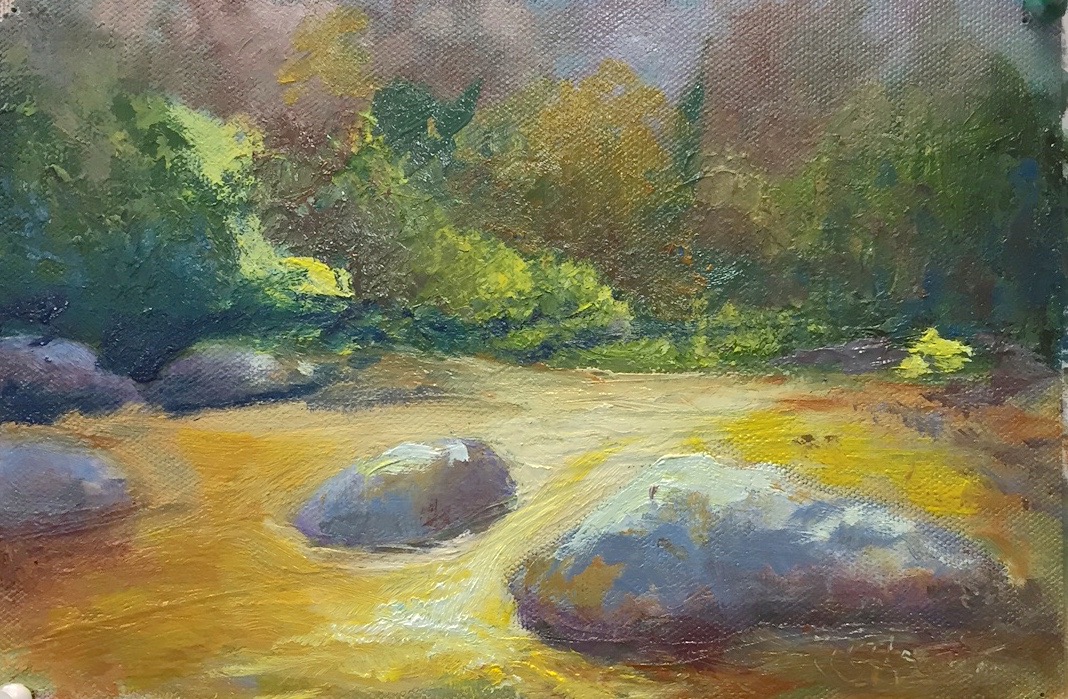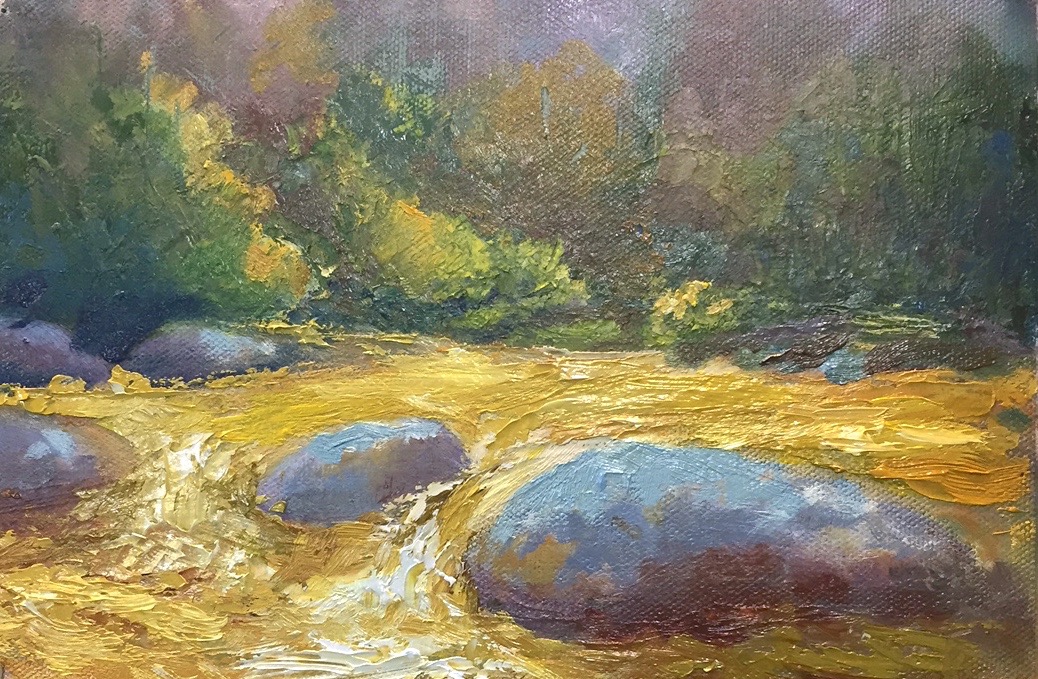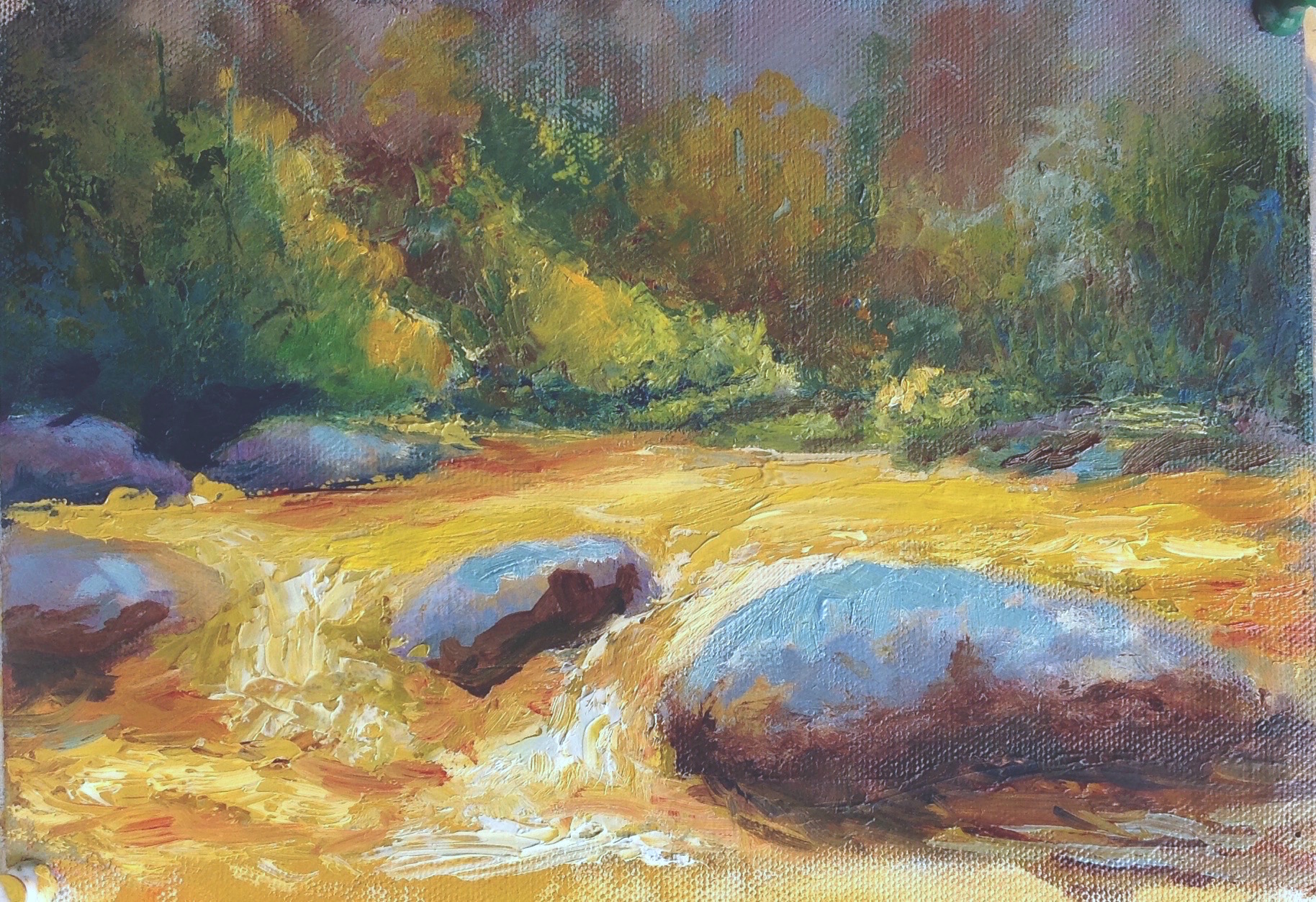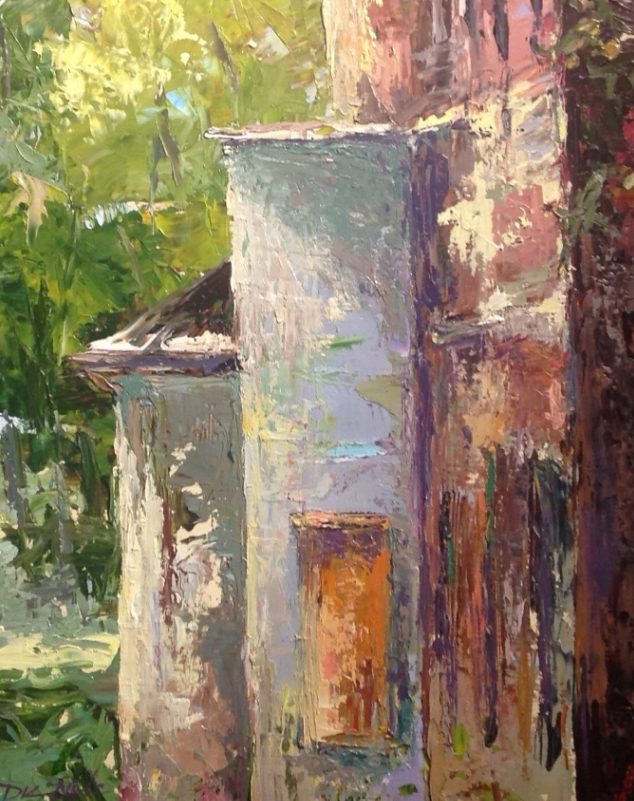Supply List Palette Knife Workshop / Beginning Painting
For questions email dawn@dawnart.com
Bring what you have but this is what you need for class.
I prefer working in oils because my mixture will stay wet for the class. Acrylic will dry quickly so you will need to keep them wet with water or a retarder.
Here is a list of suggested colors. But bring what you have. I like to have cool or neutral yellow, a warm blue, and a cool red and blue. Sap Green, Yellow Ochre, and Burnt Sienna are just great to mix with.
** See more about pigment codes below*
Pick a cool Red - Alizarin Crimson Pigment code PR83, or Permanent Rose Pigment code PV19 (primary).
Pick a cool or neutral Yellow - *Cadmium Yellow Light, PY 35 or PY3, or Hansa Yellow Light PY 74 ( I use Hansa Yellow Light from Utrecht ) * Most Cad yellows have the same code PY35. Make sure to open the tube and check to see it doesn't have an orange tint. Same name and pigment code Cad Yellow - but some are neutral and some have too much red. You can always add red, but you can’t take it out*
Pick a Cool Blue - My favorite is Phthalo Blue Green Shade PB 15 (primary), Cerulean Blue Chromium PB36. Prussia Blue, Manganese Blue – Just fine
Titanium white 5OZ Tube(Opaque wihte)
Yellow Ochre PY 42, or Yellow Oxide, either will be fine will be fine. (Great for Mixing)
Sap green or any warm green (mixture & great for mixing)
Optional colors to add later Naphthol Red or Cadmium Red or hue, Dioxide Purple - great for mixing
Beginning brush kit with a mix of bristle and soft brushes is an easy start. I have a photo below.
9 x 12, 12 x 12, 12 x 16 Canvases or panels or larger (panels work better for palette knife, but canvas is fine for all other classes) Bring extra panels or canvas pad for practice
Acrylic and oil disposable Palette Pad 16x20 . You can use a roll wax paper
Paint medium to help base coat your canvas and block in color. I use Gamblin Solvent Free Liquid or Gel. You can use other brands.
Solvent to clean burshes. I prefer Archival Odorless Solvent as it has no smell that I can tell. You can use Gamsol or turpinoid as well.
A sealed container for cleaning brushes. I use a Silicoil Jar. Or you can make your own. Click on the link for examples
Sketch pad
Pencil
Roll of paper towels
Palette knives plastic or metal- the plastic 5 pack at Binders is great for beginners ***If just buying one similar to the image below
For iPhone and iPad users, here my favorite app Accuview https://itunes.apple.com/us/app/accuview/id407578464?mt=8
**Where do you find the pigment codes and what does it tell me?
Manufacturers are free to give their art supply colors whatever name they deem appropriate. Different manufacturers give different names to the same color, even if the same pigments are used. Therefore, names may vary from one brand to another.I tend to buy single pigments except for color that I mix all the time. If love a mixture that I don’t want to buy, often the codes on the back will tell me how to mix it myself. Also, I like working with a lot of transparent colors. You can always add a touch of white to make them opaque.
Alizarin Crimson PR: 83 (single pigment)
PR: 83 – The first letter Identifies whether a pigment or a dye is used. Here the P indicates that a pigment is used.
PR: 83 – The second letter identifies the pigment code. Here, the pigment code stands for red.
PR: 83 – The number indicates the specific pigment number.
Sap Green PG7, PY75, PBk9 (mixture of three pigments)
I hope this help you get started and get in touch with any questions




